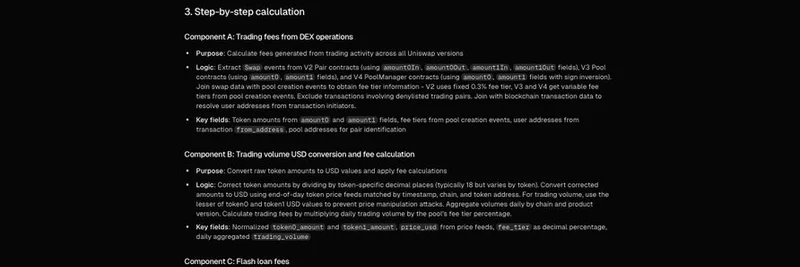If you're diving into the world of decentralized finance (DeFi), understanding how platforms like Uniswap calculate their fees is crucial—especially if you're trading meme tokens that often launch and thrive on these exchanges. Recently, Token Terminal, a leading provider of crypto fundamentals, shared a insightful tweet explaining their methodology for tracking fees on Uniswap and its latest innovation, UniChain. Let's break it down in simple terms and see why this matters for blockchain enthusiasts and meme token insiders.
Uniswap, one of the most popular decentralized exchanges (DEXs), allows users to swap tokens without intermediaries. It operates across various blockchain networks, and now with UniChain—a Layer 2 solution designed for faster and cheaper transactions—things are getting even more efficient. Token Terminal's post highlights the importance of scrutinizing the underlying smart contracts, events, and data sources to get accurate financial metrics. This transparency helps users and analysts interpret on-chain data correctly.
Why Fee Calculation Matters in DeFi
Fees in DeFi aren't just random charges; they're the revenue generated from trading activities, flash loans, and even blockchain operations. For meme token traders, lower fees mean more profits on quick flips, which is why platforms like Uniswap are go-to spots. Token Terminal emphasizes examining specific contracts and events to avoid misinterpretations. Their approach ensures that metrics reflect the true economic activity on the protocol.
Breaking Down the Methodology
Token Terminal's detailed guide, as shown in the screenshot from their platform, outlines a step-by-step process for calculating fees. Here's a conversational rundown:
Overview: Fees represent the total revenue from Uniswap's operations across versions like V2, V3, and V4. This includes trading fees, flash loans, and gas fees on UniChain, all converted to USD for easy comparison.
Data Sources: They pull from a variety of on-chain sources, such as swap events from pool contracts on networks like Ethereum, Arbitrum, Base, Polygon, and now UniChain. This also includes factory contracts for pool creation and specialized data for user addresses and gas metrics.
Step-by-Step Calculation:
- Trading Fees from DEX Operations: Extract swap events from pool contracts, calculate fees based on tier (like 0.3% for V3), and identify pairs using blockchain data.
- Convert to USD: Use end-of-day token prices to value fees accurately, aggregating daily for consistency.
- Flash Loan Fees: Pull from V3 pool contracts, calculate based on borrowed amounts and fixed fees (like 0.09%), then convert to USD.
- UniChain Blockchain Fees: This is the new part—calculate gas fees from L2 operations, including costs for data availability and execution, scaled to ETH prices.
- Final Aggregation: Combine all components, convert to USD using timestamp-matched prices, and sum up for a comprehensive view.
This methodology isn't just technical jargon; it's a blueprint for how analytics platforms like Token Terminal make sense of complex blockchain data. For meme token projects, which often rely on Uniswap for liquidity, understanding these fees can help optimize launches and trading strategies.
Implications for Meme Tokens and Blockchain Practitioners
With UniChain promising sub-second transaction times and lower costs, meme tokens could see a surge in activity. Token Terminal's transparent calculations allow traders to benchmark performance across chains. If you're building or investing in memes, keep an eye on these metrics—they can signal a project's health and user engagement.
For more deep dives into crypto analytics, check out Token Terminal's website. And if you're hunting for the next big meme, stay tuned to Meme Insider for updates on tokens shaking up the blockchain space. What's your take on UniChain's impact on DeFi fees? Drop your thoughts in the comments!



